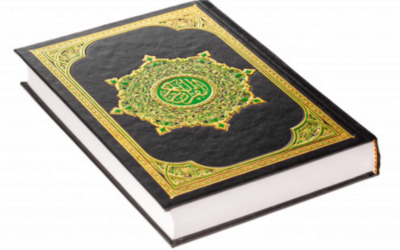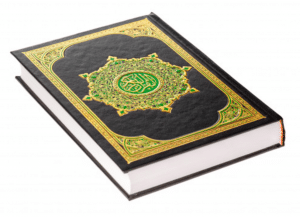An important practice in Roman Catholicism and Eastern Orthodoxy is the veneration of icons and images. Practitioners honor representations of Jesus, Mary, saints, and angels through bowing, lighting candles, burning incense, and directing their prayers to the depicted figure in heaven through their image. While members of both of these faiths make a distinction between these acts of religious reverence and the worship they offer to God, many in church history have recognized this practice as idolatry, and it was a significant issue of criticism by the leaders of the Protestant Reformation. From the earliest years that this practice emerged down to today, it has been common to defend it by saying that, far from being idolatry, it is more akin to the proper use of images in the Tabernacle and Jewish Temple.
The Cherubs of the Holy Sanctuary
It is a common refrain to hear advocates of image veneration appeal to the depictions of Cherubim (angelic beings) in the tabernacle as proof that it was God’s intention for His people to venerate images, just not images of false gods. For example, God told the Israelites:
“Moreover you shall make the tabernacle with ten curtains of fine twisted linen, and blue, purple, and crimson yarns; you shall make them with cherubim skillfully worked into them,” (Exodus 26:10).
The mere presence of these pictures, however, does not equate to veneration. The Torah describes the proper Israelite worship in the tabernacle as approved by God in painstaking detail, and nowhere are worshippers permitted to prostrate themselves before the pictures on the curtain to petition the Cherubs depicted there for intercession before God. The Israelites were not told to revere the Cherubs, not to offer them incense or kiss their pictures on the curtain. Certainly, the pictures were meant to communicate to those entering something of the heavenly sanctity of the space inside the curtain, but the images themselves were not objects of direct ceremonial reverence nor were they vicarious representations of specific angels that the children of Israel were called upon to venerate. Perhaps the more relevant images of Cherubim, however, were the figures on the Ark of the Covenant:
“You shall make a mercy seat of pure gold, two and a half cubits long and one and a half cubits wide. You shall make two cherubim of gold, make them of hammered work at the two ends of the mercy seat. Make one cherub at one end and one cherub at the other end; you shall make the cherubim of one piece with the mercy seat at its two ends. The cherubim shall have their wings spread upward, covering the mercy seat with their wings and facing one another; the faces of the cherubim are to be turned toward the mercy seat. You shall put the mercy seat on top of the ark, and in the ark, you shall put the testimony which I will give to you. There I will meet with you; and from above the mercy seat, from between the two cherubim which are upon the ark of the testimony, I will speak to you about all that I will give you in commandment for the sons of Israel,” (Exodus 25:17-22).
One might be tempted to claim that, since the Cherubim are on the Ark and veneration was directed toward the ark that, therefore, the Cherubim themselves were objects of veneration. This is actually untrue. Interestingly, the scene on the ark is an empty seat flanked by two angelic beings. There is no image enthroned on the seat, yet it is this seemingly empty space above the seat that is the focus of the whole construction. That is the space that represents the presence of God. “There I will meet with you; and from above the mercy seat, from between the two cherubim which are upon the ark of the testimony.” Far from being objects of honor themselves, the Cherubs are depicted as honoring this space:
“The cherubim had their wings spread upward, covering the mercy seat with their wings, with their faces toward each other; the faces of the cherubim were toward the mercy seat,” (Exodus 37:9).
If you are diverting your attention to focus on these angels as the objects of your honor, you are completely missing the point. All of this pointed only to the invisible God:
“When Moses went into the tent of meeting to speak with the Lord, he would hear the voice speaking to him from above the mercy seat that was on the ark of the covenant from between the two cherubim; thus it spoke to him,” (Numbers 7:89).
The veneration before the ark was never directed at the Cherub figures. It was always directed at this imageless space above the seat that represented the presence of God:
“He shall take a firepan full of coals of fire from upon the altar before the Lord and two handfuls of finely ground sweet incense, and bring it inside the veil. He shall put the incense on the fire before the Lord, that the cloud of incense may cover the mercy seat that is on the ark of the testimony, otherwise he will die. Moreover, he shall take some of the blood of the bull and sprinkle it with his finger on the mercy seat on the east side; also in front of the mercy seat he shall sprinkle some of the blood with his finger seven times,” (Leviticus 16:12-14).
The Temple expanded on this picture by adding additional images of Cherubs in the sanctuary of the Ark:
“In the inner sanctuary, he made two cherubim of olivewood, each ten cubits high. Five cubits was the length of one wing of the cherub, and five cubits the length of the other wing of the cherub; it was ten cubits from the tip of one wing to the tip of the other. The other cherub also measured ten cubits; both cherubim had the same measure and the same form. The height of one cherub was ten cubits, and so was that of the other cherub. He put the cherubim in the innermost part of the house; the wings of the cherubim were spread out so that a wing of one was touching the one wall, and a wing of the other cherub was touching the other wall; their other wings toward the center of the house were touching wing to wing. He also overlaid the cherubim with gold. He carved the walls of the house all around about with carved engravings of cherubim, palm trees, and open flowers, in the inner and outer rooms. The floor of the house he overlaid with gold, in the inner and outer rooms,” (1 Kings 6:23-30).
Yet even here, they serve only as a covering for the Ark to direct attention to the holy space:
“Then the priests brought the ark of the covenant of the Lord to its place, into the inner sanctuary of the house, to the holy of holies, under the wings of the cherubim. For the cherubim spread their wings over the place of the ark, so that the cherubim made a covering over the ark and its poles,” (2 Chronicles 5:7-8).
There is, again, no place for the veneration of the Cherub statues themselves. They exist only to direct undivided veneration to the presence of God above the mercy seat, for which there is no image. Noticeably absent are any icons of the patriarchs, prophets, or other key religious figures. The few images that do exist, far from being a precedent for making images of angels the objects of our ceremonial honor or worship, are there only to represent the fact that even the heavenly angels reverence the invisible One enthroned above the mercy seat. It is to Him alone that the people of God were to direct their veneration.
Other Images in the Temple
The Temple did possess a few other images. For example:
“Now he made the sea of cast metal ten cubits from brim to brim, circular in form, and its height was five cubits, and thirty cubits in circumference. Under its brim gourds went around encircling it ten to a cubit, completely surrounding the sea; the gourds were in two rows, cast with the rest. It stood on twelve oxen, three facing north, three facing west, three facing south, and three facing east, and the sea was set on top of them, and all their rear parts turned inward. It was a handbreadth thick, and its brim was made like the brim of a cup, as a lily blossom; it could hold two thousand baths,” (1 Kings 7:23-26).
But these are scarcely mentioned and served only ornamental and symbolic purposes. At any rate, they are images of plants and animals which have no meaningful connection to the images honored by the Roman Catholics or Eastern Orthodox. If we are to learn anything from them at all about the proper use of images, it is that it is okay to make a bronze ox merely as a stand on which the washing basin rests. It is not okay to make a golden calf toward which one offers their worship, prayers, or sacrifices. Art is not forbidden, but there is no precedent for the vicarious veneration of images. John of Damascus, one of the earliest defenders of the veneration of images in Christian churches, argued:
“Divine Scripture blames those who worship graven images, but also those who sacrifice to demons. The Greeks sacrificed and the Jews also sacrificed: but the Greeks to demons and the Jews to God. And the sacrifice of the Greeks was rejected and condemned, but the sacrifice of the just was very acceptable to God,” (John of Damascus, Exposition of the Orthodox Faith, Book 4, Chapter 16).
By this, he sought to demonstrate that, just as there is good sacrifice and evil sacrifice, there is also good image worship and bad image worship. This is not what he actually demonstrates, however. If he demonstrates anything at all, it is that the veneration of images must be rejected. If we follow his logic, we see that the pagans venerated images while the Jews worshiped God alone without images. The veneration of images was rejected while the worship of the invisible God without any icon or sculpture as its object was accepted. There is simply no biblical precedent for the acceptable veneration of images of heavenly beings, whether they be images of angels, fallen saints, or God Himself.





